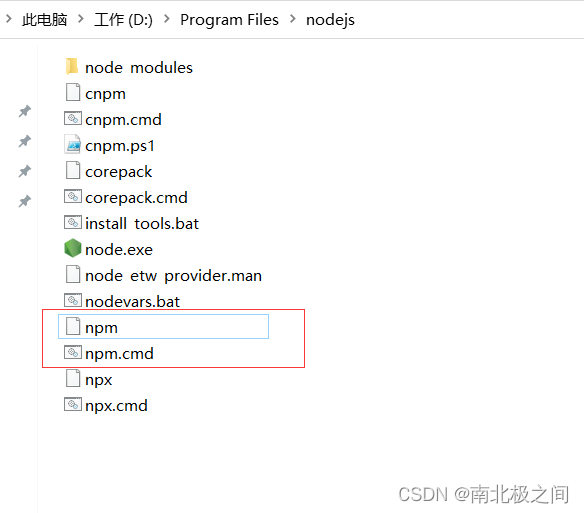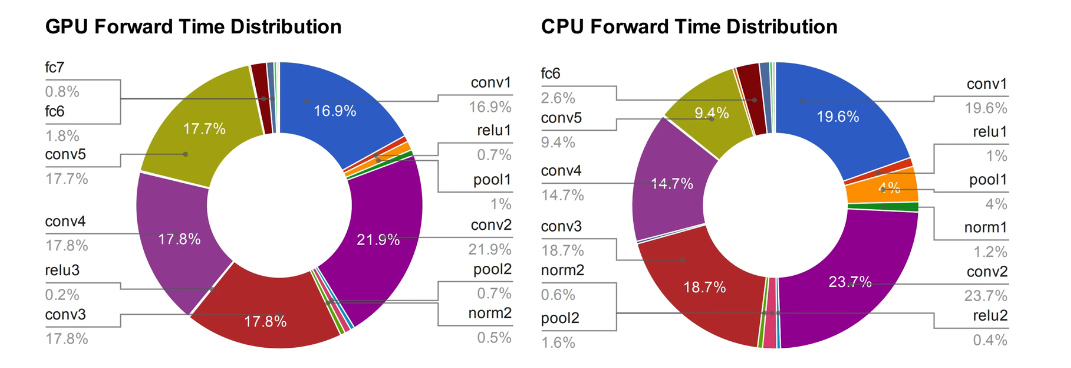当前位置:网站首页>Future与CompletableFuture
Future与CompletableFuture
2022-08-10 20:49:00 【码涤生】
一、使用的场景
Java多线程的背景下,运行线程的时候可以有两种形式,一种是有返回值的一种是没有返回值的。当我们获取运行的线程的返回值需要结合Future来进行使用。
二、 传统Future
Future主要时在异步执行的过程中可以有返回值,与之相对应的有一个FutureTask,这两个接口的区别是:
- Future在源码中有一段这样的描述“represents the result of an asynchronous computation”也就是说他代表的是一个异步计算返回的结果
- 其中Callable代表的是返回一个结果,在源码中是这样描述的“A task that returns a result and may throw an exception”
- 那么一个实现Callable的接口就可以执行一个任务,利用多线程这个任务可以是异步的,他返回的结果可以用Future进行接收
- Runnable,所有实现了他类的实例都可以被线程执行,实现它主要是实现一个参数的方法
- FutureTask是一个类,他实现了Runnable、Future,所以说实现他的对象即可以被线程执行(实现了Runnable)也可以有返回值(拥有Future的API接口)
1、FutureTask示列
public class FutureDemo {
/** *@description: FutureTask 利用线程来进行执行 */
@Test
public void test01(){
FutureTask<String> futureTask = new FutureTask<String>(new MyThread());
new Thread(futureTask, "t1").start();
try {
System.out.println(futureTask.get());
} catch (InterruptedException e) {
e.printStackTrace();
} catch (ExecutionException e) {
e.printStackTrace();
}
}
}
class MyThread implements Callable<String>{
@Override
public String call() throws Exception {
System.out.println("come in call()");
return "hello callable";
}
}
2、Future的单独使用
@Test
public void test03(){
//其中引出的一个问题就是future与futureTask之间的区别于联系
//FutureTask不仅继承了Future还继承了Runable,所以说他具有了双重属性
ExecutorService fixedThreadPool = Executors.newFixedThreadPool(5);
Future<String> stringFuture1 = fixedThreadPool.submit(new MyThread());
Future<String> stringFuture2 = fixedThreadPool.submit(() -> {
System.out.println("通过语法糖实现的FutureTask");
return "FutureTask Success";
});
}
作为执行过程中的一个资源单位的Thread,他们重复利用的是线程池,线程池的接口是Executor,里面他的方法是execute(Runnable command),入参是Runable形的,Runable中需要实现的接口是run(),这个方法没有返回值。线程中可以有返回值的是Callable接口,他的需要实现的方法是call()。但是他不能直接被线程执行,因为线程Thread构造函数的入参不包括Callable类型的,如果想要使用它可以配合FutureTask进行使用,他实现了Runnable、Future,所以即可以被线程执行也可以有返回值,那么线程执行的时候执行那个计算呢?那就是通过构造函数的参数传递进去的Callable类型的,他完美的将Thread与Future结合了起来。
//------------
//FutureTask中Runnable类型的入参计算执行了
//Result
public static void main(String[] args) throws ExecutionException, InterruptedException {
FutureTask<String> futureTask = new FutureTask(()->{
try {
TimeUnit.MILLISECONDS.sleep(2000);
} catch (InterruptedException e) {
e.printStackTrace();
}
System.out.println("FutureTask中Runnable类型的入参计算执行了");
},"Result");
new Thread(futureTask).start();
System.out.println("------------");
System.out.println(futureTask.get());
}
Future使用过程中的优缺点也是十分明显的,有点就是他可以得到返回值,缺点则是在得到返回值的时候会发生阻塞,下面CompletableFuture的出现也就是为了解决Future的缺点,他可以看做是结合
三、CompletableFuture的使用
1、网络数据抓取的模仿示例
如果想要做一比价的程序,那么我们首先需要通过网络请求得到我们目标网站中的价格信息,在获得价格信息的过程中存在网络调用,这是耗时的操作。示例中做的就是结合JDK8中的流操作模拟同步操作与异步操作两种的效率。需要关注的主要是流式编程在网络请求中的应用。
public class CompletableFutureMallDemo {
static List<NetMall> list = Arrays.asList(
new NetMall("jd"),
new NetMall("dangdang"),
new NetMall("taobao")
);
public static List<String> getPrice(List<NetMall> list,String productName){
return list.stream().map(netMall->{
return String.format(productName+"in %s price is %.2f",
netMall.getNetMallName(),netMall.calcPrice(productName));
}).collect(Collectors.toList());
}
public static List<String> getPriceFuture(List<NetMall> list,String productName){
return list.stream().map(netMall -> {
//将请求的标准信息分装成一部请求的方式
return CompletableFuture.supplyAsync(()->{
//由于已经被封装成一部请求的方式所以这里对calcPrice的每次调用实际上都是
//放在线程池中完成的,可以并行执行
System.out.println("生成CompletableFuture");
return String.format(productName+"in %s price is %.2f",
netMall.getNetMallName(),netMall.calcPrice(productName));
});
})
//如果没有这一步,数据实际上也是会变成并行操作,那么是为什么呢?
//1、如果要是不要这一步,数据就是上边的数据传递过来一个最后一行的map执行一个
//由于最后一个map中的数据执行是阻塞的,那么就造成了整个流的阻塞
//2、添加上了下面的一步那就是先将上面转换CompletableFuture的执行完,之后再遍历调用
//最后一个map的?好像也不是很能说的通,但是事实却是如此,从运行的结果上来看也是这样的
.collect(Collectors.toList()).stream()
.map((s)->{
System.out.println("从生成CompletableFuture中获取数据");
return s.join();
}).collect(Collectors.toList());
}
public static void main(String[] args) {
System.out.println("传统串行形式");
long startTime = System.currentTimeMillis();
getPrice(list,"mysql").forEach(item -> {
System.out.println(item);
});
long endTime = System.currentTimeMillis();
System.out.println("---costTime: "+(endTime - startTime)+"毫秒");
System.out.println("并行运行");
long startTime2 = System.currentTimeMillis();
getPriceFuture(list,"mysql").forEach(item -> {
System.out.println(item);
});
long endTime2 = System.currentTimeMillis();
System.out.println("---costTime: "+(endTime2 - startTime2)+"毫秒");
}
}
@Data
@AllArgsConstructor
class NetMall{
private String netMallName;
public double calcPrice(String productName){
try{
TimeUnit.SECONDS.sleep(1);
}catch (InterruptedException e){
e.printStackTrace();
}
return ThreadLocalRandom.current().nextDouble()*2+productName.charAt(0);
}
}
![[外链图片转存失败,源站可能有防盗链机制,建议将图片保存下来直接上传(img-CW2akxXf-1660009190406)(F:\typroa\aimages\image-20220808230437705.png)]](/img/67/87ce305c27d97f8101285337cb2fe7.png)
2、获取返回值
@Test//测试返回值
public void test01() throws ExecutionException,
InterruptedException, TimeoutException {
//获取结果
CompletableFuture<String> completableFuture = CompletableFuture.supplyAsync(() -> {
try {
TimeUnit.SECONDS.sleep(3);
} catch (InterruptedException e) {
e.printStackTrace();
}
return "abc";
});
try {
TimeUnit.SECONDS.sleep(1);
} catch (InterruptedException e) {
e.printStackTrace();
}
//get方法的执行也是阻塞的,变现为——如果建第一个get注销因为return需要3s才能返回所以
//第二个的get就会超时,将会报超时错误TimeoutException
System.out.println(completableFuture.get());
System.out.println(completableFuture.get(1, TimeUnit.SECONDS));
//相对于get来说在编译的时候不报错,但是在运行的时候依旧是会报错的
System.out.println(completableFuture.join());
//如果计算完成直接返回正确值,否则的话返回默认值
System.out.println(completableFuture.getNow("XXX"));
//打断计算的过程给一个默认值到get、join
System.out.println(completableFuture.complete("completeValue")+"\t"+completableFuture.join());
}
3、thenApply——发生异常中断后续执行
@Test//对计算的结果进行处理,如果有异常在当前的阶段就进行终止
public void test02(){
ExecutorService threadPool = Executors.newFixedThreadPool(3);
CompletableFuture.supplyAsync(()->{
try {
TimeUnit.SECONDS.sleep(1);
} catch (InterruptedException e) {
e.printStackTrace();
}
System.out.println("111");
return 1;
}).thenApply(f->{
int i = 10/0;
System.out.println("222");
return f+2;
}).thenApply(f->{
System.out.println("333");
return f+3;
}).whenComplete((v,e)->{
System.out.println("whenComplete");
if (e==null){
System.out.println("计算结果为:"+v);
}
}).exceptionally(e->{
e.printStackTrace();
System.out.println(e.getMessage());
return null;
});
System.out.println(Thread.currentThread().getName()+"---主线程先去忙其他的任务");
//主线程不能够立马关闭否则的话CompletableFuture的线程也会关闭,或者说谁自己建立一个线程池
//但是如果是自己建的线程池最终通过shutdown进行关闭在@Test的方法中是不行的
try {
TimeUnit.SECONDS.sleep(1);
} catch (InterruptedException e) {
e.printStackTrace();
}
}
4、handle——发生异常继续执行
@Test//对计算的结果进行处理,handle处理中是可以继续朝下执行的
public void test03(){
ExecutorService threadPool = Executors.newFixedThreadPool(3);
CompletableFuture.supplyAsync(()->{
try {
TimeUnit.SECONDS.sleep(1);
} catch (InterruptedException e) {
e.printStackTrace();
}
System.out.println("111");
return 1;
}).handle((f,e)->{
int i = 10/0;
System.out.println("222");
return f+2;
}).handle((f,e)->{
System.out.println("333");
return f+3;
}).whenComplete((v,e)->{
if (e==null){
System.out.println("计算结果为:"+v);
}
}).exceptionally(e->{
e.printStackTrace();
System.out.println(e.getMessage());
return null;
});
try {
TimeUnit.SECONDS.sleep(1);
} catch (InterruptedException e) {
e.printStackTrace();
}
}
上面两种说的中断或是不中断都是对处理过程而言的,对于whenComplete、exceptionally代码块中的都是会执行的不过,不过那一阶段发生错误,whenComplete中值的参数都会是null
5、自定义线程池无序手动阻塞主线程
public static void threadPoolTest(){
ExecutorService threadPool = Executors.newFixedThreadPool(3);
CompletableFuture.supplyAsync(()->{
try {
TimeUnit.SECONDS.sleep(1);
} catch (InterruptedException e) {
e.printStackTrace();
}
System.out.println("111");
return 1;
},threadPool).thenApply(f->{
System.out.println("222");
return f+2;
}).thenApply(f->{
System.out.println("333");
return f+3;
}).whenComplete((v,e)->{
if (e==null){
System.out.println("计算结果为:"+v);
}
}).exceptionally(e->{
e.printStackTrace();
System.out.println(e.getMessage());
return null;
});
threadPool.shutdown();
}
6、thenAccept中只消费不返回
join是从他链的上一步获取返回值,如果没有返回值则返回Null
@Test//thenAccept中只消费不返回
public void test04(){
System.out.println(CompletableFuture.supplyAsync(() -> {
return 1;
}).thenApply(f -> {
return f + 2;
}).thenAccept(f -> {
System.out.println(f);
}).thenRun(() -> {
System.out.println("执行在上链操作的后面但是不接受结果也不进行返回值");
}).join());
//join是从他链的上一步获取返回值,如果没有返回值则返回Null
}
7、线程池使用的优先级顺序
如果要是使用的是默认的线程,那么同步调用的话就会一直使用这个任务;异步那就肯定也是如此,如果使用的是异步接口那么在执行调用链上的第一个任务的时候用的是自定义的,后面的用的是默认的。基于线程的优化策略,有可能还会直接使用主线程。
@Test
//执行的时候如果没有自定义线程池,那么都默认使用ForkJoinPool
//执行的时候定义了线程池,调用thenRun方法执行第二个任务的时候还会使用与第一个任务
//相同的线程池;如果是调用thenRunAsync执行第二个任务的时候则第一个任务使用的是你
//自己传入的线程池,第二个任务使用的是ForkJoin的线程池
//有可能处理的太快,基于系统的优化,直接使用main线程进行处理
public void test05() {
ExecutorService executor = Executors.newFixedThreadPool(5);
CompletableFuture.supplyAsync(()->{
System.out.println("1号任务"+"\t"+Thread.currentThread().getName());
return "abcd";
}).thenRun(()->{
try {
TimeUnit.SECONDS.sleep(1);
} catch (InterruptedException e) {
e.printStackTrace();
}
System.out.println("2号任务"+"\t"+Thread.currentThread().getName());
}).thenRun(()->{
try {
TimeUnit.SECONDS.sleep(1);
} catch (InterruptedException e) {
e.printStackTrace();
}
System.out.println("3号任务"+"\t"+Thread.currentThread().getName());
}).thenRun(()->{
try {
TimeUnit.SECONDS.sleep(1);
} catch (InterruptedException e) {
e.printStackTrace();
}
System.out.println("4号任务"+"\t"+Thread.currentThread().getName());
});
}
8、两个中选一个进行执行
@Test//两个中选一个执行速度快的进行执行
public void test06(){
CompletableFuture<String> playA = CompletableFuture.supplyAsync(() -> {
System.out.println("Play-A come in!");
try {
TimeUnit.SECONDS.sleep(1);
} catch (InterruptedException e) {
e.printStackTrace();
}
return "Play-A";
});
CompletableFuture<String> playB = CompletableFuture.supplyAsync(() -> {
System.out.println("Play-B come in!");
try {
TimeUnit.SECONDS.sleep(2);
} catch (InterruptedException e) {
e.printStackTrace();
}
return "Play-B";
});
System.out.println(playA.applyToEither(playB, f -> {
return f + " is winer !!!";
}).join());
}
9、执行结果合并
@Test//对结果进行合并
public void test07(){
CompletableFuture<Integer> completableFuture1 = CompletableFuture.supplyAsync(() -> {
System.out.println(Thread.currentThread().getName() + "\t 启动");
try {
TimeUnit.SECONDS.sleep(1);
} catch (InterruptedException e) {
e.printStackTrace();
}
return 10;
});
CompletableFuture<Integer> completableFuture2 = CompletableFuture.supplyAsync(() -> {
System.out.println(Thread.currentThread().getName() + "\t 启动");
try {
TimeUnit.SECONDS.sleep(2);
} catch (InterruptedException e) {
e.printStackTrace();
}
return 20;
});
long start = System.currentTimeMillis();
System.out.println(completableFuture1.thenCombine(completableFuture2, (v1, v2) -> {
System.out.println("连个异步的结果进行合并");
return v1 + v2;
}).join());
long end = System.currentTimeMillis();
System.out.println("共计耗时:"+(end - start));
}
边栏推荐
- C语言写数据库
- 一次由groovy引起的fullGC问题排查
- (十二)STM32——NVIC中断优先级管理
- C. Social Distance
- Detailed explanation of the use of Oracle's windowing function (2)
- 数据标注太昂贵?这个方法可以用有限的数据训练模型实现基于文本的ReID!
- npm warn config global `--global`, `--local` are deprecated. use `--location=global` instead.
- Detailed explanation and use of each module of ansible
- 机器学习笔记:t-SNE
- 壁仞推出全球最大算力芯片,号称以7nm超越英伟达4nm最新GPU
猜你喜欢

npm warn config global `--global`, `--local` are deprecated. use `--location=global` instead.

【一致性hash】负载均衡器分发请求

机器学习笔记:t-SNE

paddle 35 paddledetection保存训练过程中的log信息

apr_thread使用内存之谜

论文解读(g-U-Nets)《Graph U-Nets》

数字化转型:如何引导创新领导者

【图像分类】2017-MobileNetV1 CVPR

【golang map】 深入了解map内部存储协议

爱丁堡大学最新《因果机器学习: 医疗健康与精准医疗应用》2022综述
随机推荐
【CMU博士论文】视频多模态学习:探索模型和任务复杂性,152页pdf
MySQL数据库的主从复制部署详解
二级指针的简单理解
PostgreSQL — 安装及常用命令
重载和重写
【ACM】dp专场训练
如何提交一个PR?【OpenHarmony成长计划】【OpenHarmony开源社区】
【nvm】【node多版本管理工具】使用说明和踩坑(exit status 1)
【语义分割】2015-UNet MICCAI
Apache DolphinScheduler 3.0.0 正式版发布!
B. Same Parity Summands
洛谷 P1629 邮递员送信 (三种最短路)
组合导航精度分析
【图像分类】2019-MoblieNetV3 ICCV
How to submit a PR?【OpenHarmony Growth Plan】【OpenHarmony Open Source Community】
Detailed explanation and use of each module of ansible
找的笔试题的复盘(一)
三子棋的设计和代码
日期选择器组件(限制年份 设定仅展示的月份)
测试开发【Mock 平台】08 开发:项目管理(四)编辑功能和Component抽离